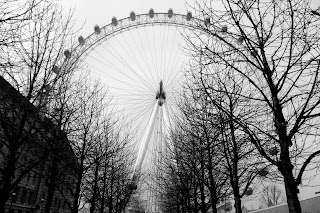Overall I think that all of my photos have
good and bad points, I don’t think any of them are perfect but none of them are
really bad. I think that you can see from the beginning of my blog to where it
is now that I have improved, weather its to do with the lighting, the
composition or how I have edited it in Photoshop. I have included some photos that i am proud of this year also as examples.
I think that my strengths within photography are:
Putting the photo together, getting all the components within the photo to complement or to enhance each other.
I think that my strengths within photography are:
Putting the photo together, getting all the components within the photo to complement or to enhance each other.
Being able to edit the photos to quite a
high standard.
Learning more about my camera and what it
can do as through out this course I have used my own camera so it has helped
enhance my ability to use my camera.
I think that my weaknesses would be:
Not knowing the terminology as well as I could but I know that it takes time.
I think that my weaknesses would be:
Not knowing the terminology as well as I could but I know that it takes time.
I think I sometimes get stuck using certain
types of effects; I would like to expand on this.
Through out this course I think that I have developed many skills within the photography and the technological side. With in photography I feel that I am now able to compose a photo to a high standard no matter weather it is a portrait, macro, landscape or for a advert. I now have an understanding of different terminology, I still need to look at my glossary from time to time but I know that I’ll get there eventually. I think I have also learned to put my opinions aside, when it comes to clients and going with what the client wants rather then going with your opinion, such as I’m doing the photography for my mums sweet shop and its more to what she wants her photos to show then what I think may work. When it comes to the technological side of it I know that I am defiantly still learning but I am now understanding that a shutter is the part of the camera that covers the lens and controls how much light is passed through and that aperture is a opening within the camera lens which is where the light passes through. I now have an understanding that can only improve.
Through out this course I think that I have developed many skills within the photography and the technological side. With in photography I feel that I am now able to compose a photo to a high standard no matter weather it is a portrait, macro, landscape or for a advert. I now have an understanding of different terminology, I still need to look at my glossary from time to time but I know that I’ll get there eventually. I think I have also learned to put my opinions aside, when it comes to clients and going with what the client wants rather then going with your opinion, such as I’m doing the photography for my mums sweet shop and its more to what she wants her photos to show then what I think may work. When it comes to the technological side of it I know that I am defiantly still learning but I am now understanding that a shutter is the part of the camera that covers the lens and controls how much light is passed through and that aperture is a opening within the camera lens which is where the light passes through. I now have an understanding that can only improve.
How I intend to develop these skills is to really keep practicing and trying out new angles with the camera and playing around with the settings on both the camera and on programs such as adobe. I want to add more of my photos to my portfolio and to get a professionals opinion at some stage in the future.
I don’t really have any photographers that inspire me, yet that is but I do have many graphic designers that inspire me when it comes to the layout, their use of colour, how much detail there is or how little, the use of angles and lighting and also how you show emotion within the work getting the viewer to see what emotion you wanted them to see. I am more into the editing part of photography how you can manipulate and change a photo just by a few clicks.
I think my photos have met my expectations, as I didn’t really have any to start off with, this is because I had never really done any professional like photography before only really the holiday photos sort of thing. But now it has really opened my eyes I really do think now before I take a photo it’s really cool. So I guess now my expectations are to improve on what I have achieved to far and to enhance my skills.

How my photos compare to professional photography, I think my photos are of a high quality but I still have a way to go when it come to the professional standard. I believe that I am on the right track to getting up to the professional standard but seeing as I only really started photography this year I’m happy with the standard of my work.



































